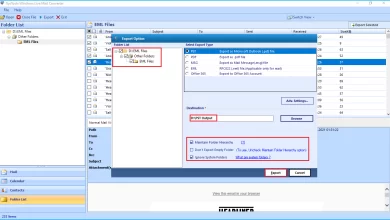5 Types of Blockchain Testing You Should Know About

The systematic examination of the blockchain’s many functional components is known as blockchain testing. Unlike the typical software testing process, blockchain testing entails several components, including blocks, mining, transactions, wallet, etc., all of which necessitate the use of specialized tools.
The development of several quality stages, spanning from the performance of the system to the safety of the blockchain application, at every process, the blockchain testing is there. Businesses all over the world use blockchain technology to enhance data storage, safety, and administration. As a result, it’s now more important than ever to rigorously test blockchain-based apps.
Advantages of Blockchain Testing
Let us now look at some of the advantages of blockchain testing:-
- Ensures that a decentralized ledger is free of flaws.
- It aids to validate all of the many entities in which the system is working.
- Guarantees that the blockchain ecosystem has matured and is performing as planned.
- It enables businesses to design and deploy blockchain technology and linked infrastructure in a safe manner.
- Assist to lessen the risk of introducing new apps while also allowing for a smooth revalidation of the implementation.
Blockchain Testing Types
- Functional testing – The efficiency of different functional elements of a blockchain system is determined through functional testing.
- Node testing – It assists with the independent analysis of every network node to guarantee problem-free connectivity.
- Performance testing – Performance testing discovers system flow constraints and suggests the best solution.
- API testing – API testing ensures that requests and answers between apps throughout the blockchain network are correctly operated, resulting in clear communication between them.
- Integration Testing – Blockchain applications may be used in a variety of settings. As a result, one should test the inter-system connectivity using integration testing.
Blockchain Testing Phases
-
Initiation Phase
The initial step is the commencement phase. The testers learn about the system’s life cycle by examining and comprehending its functionality, which allows them to better grasp all of the components involved. To have a solid idea of how the system operates generally, you require a comprehensive map that contains each of the parts of the system and subcomponents, along with all of the interactions.
-
Design Phase
The design phase includes the major elements of the system that need testing. There’s also a well-detailed test plan suited to the blockchain network. The test cases & testing environment requirements for the system are described in this test strategy.
-
Planning Phase
This phase determines how each sort of testing should work, and also how many tests can be there at every stage, and to what extent.
Alternative testing procedures should be in place if the system is unavailable. A different test technique is to create a private blockchain during testing. These tests include API testing, functionality testing, performance testing, vulnerability scanning, and so forth.
-
Result Phase
It is the last step, which provides an assessment of the system’s overall test results. The essential tasks that should complete during this phase are system performance, low-level checks, and verification of blocks, transactions, as well as smart contracts.
The Difficulties of Blockchain Testing
- The dearth of testing tools is one of the major obstacles. Due to the limited number of tools accessible for each framework, selecting the incorrect tool might result in issues.
- A lack of professional experience is another challenge in the blockchain ecosystem. Since blockchain technology is relatively new in the computer industry, software developers have yet to embrace it.
- Another difficulty is strategy testing. It demands a deep grasp of how the blockchain operates.
- Various industries use blockchain technology, making network security a bit challenging. As a consequence, data security is essential for avoiding criminal activity.
Conclusion
You cannot satisfy the demand to create high-quality goods as blockchain usage rises without making an investment in blockchain testing skills. It guarantees that all system components are functioning correctly and that all apps communicate with it in a secure manner. But to get the most out of blockchain testing, it is the right step to take the help of a professional software testing company like QASource.
Visit QASource now to implement premium software testing services to your software products.




